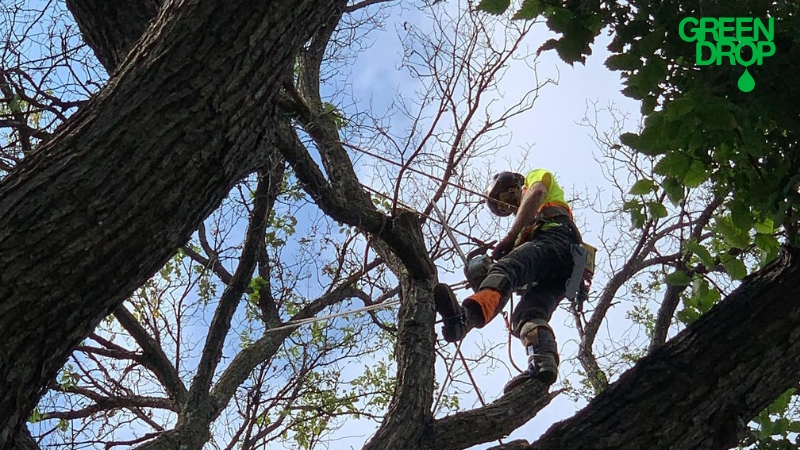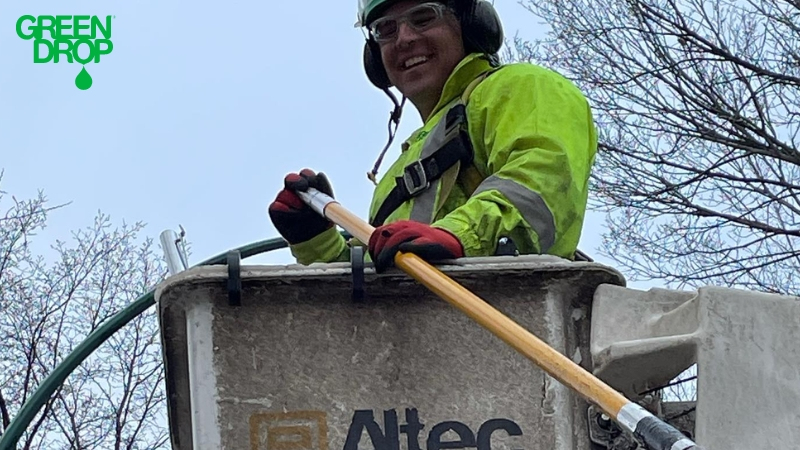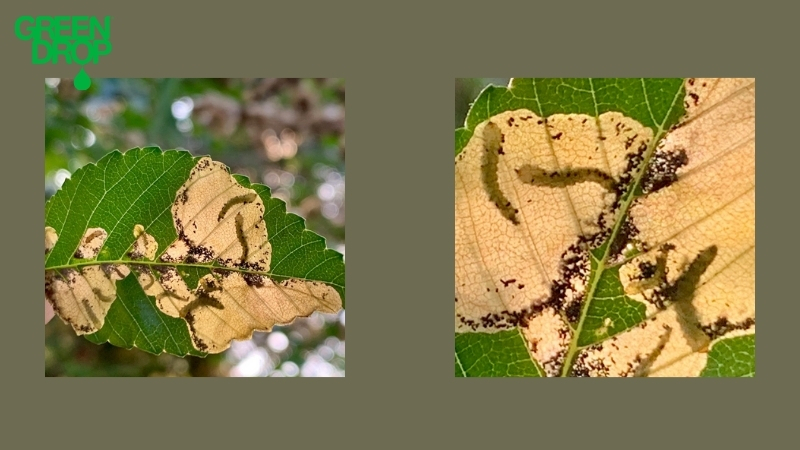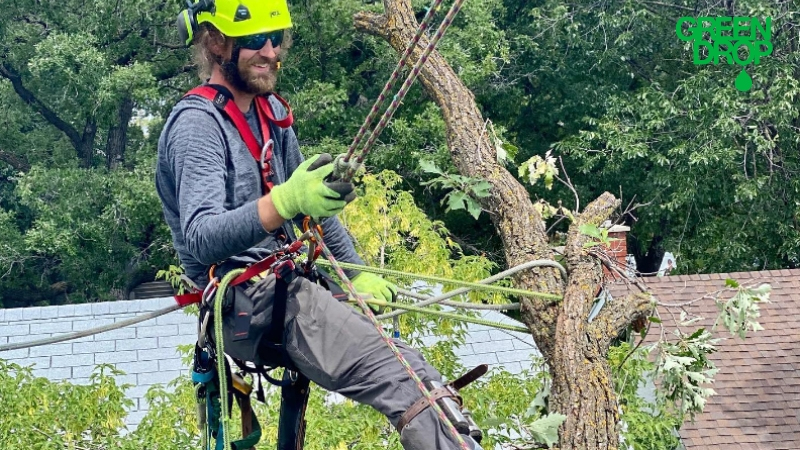Pruning Myths Debunked: Separating Fact from Fiction for Your Calgary Tree Care
Reading time: 6 minutesPruning is not just a fancy word for giving your trees a haircut! While you might think of it as just chopping off unruly branches, there's real science (and art) to correctly snipping your saplings.
Pruning is all about removing diseased branches to improve a tree’s health and spur growth. However, don’t be fooled by all the myths around it.
Stick around as we slice through the thicket of untruths surrounding tree pruning.

Pruning Myths Debunked
Myth 1: Pruning is only about cutting back branches.
Pruning isn't just a random snip-snip here and a chop-chop there to tame unruly branches. It's a deliberate strategy aimed at improving your tree’s health and vitality.
Effective pruning focuses on removing diseased and dead parts of the tree that in turn, helps redistribute energy more efficiently across the tree.
It's not about making trees fit your space or aesthetic desires (that’s tree trimming) but ensuring they thrive and function better in their environment.
Myth 2: Trees heal themselves after pruning.
Unlike humans, who can heal their wounds, trees compartmentalize them. When a tree is pruned, it begins a complex process of creating barriers around the cut area to block decay and prevent infection.
This biological response, known as compartmentalization, involves the tree isolating the wounded tissue rather than regenerating it.
This isn’t healing per se; it’s more about containment. Understanding this can change how and when we choose to prune, ensuring we do not inadvertently expose trees to greater risks of disease.
Myth 3: More pruning equals more growth.
It's a common misconception that aggressively cutting back a tree will help it grow healthier. However, over-pruning can stress a tree, stunting its growth and weakening its structure.
A tree needs its foliage to produce energy. Overly thinning out branches can reduce this capacity, leading to less vitality and resilience.
When too much of the tree’s canopy is removed, it can disrupt the tree’s natural growth patterns and energy reserves, potentially leading to disease susceptibility and reduced lifespan. Proper pruning should enhance a tree's structure, not diminish it.
Myth 4: Late fall or winter pruning harms trees.
Many believe that pruning trees during Calgary's harsh late fall or winter could damage them. However, for many species, dormant pruning is ideal.
It minimizes sap loss, which can attract insects, and allows the tree to focus its energy on healing in spring. This timing can also give a clearer view of the tree's structure, facilitating more thoughtful cuts.
Additionally, diseases and pests are less active during the cold months, reducing the risk of infection at the pruning sites. Dormant pruning prepares trees for robust spring growth by removing dead or diseased wood.
Myth 5: All trees should be pruned at the same time of year.
Trees are as individual as people, and different species thrive with pruning at different times of the year. Knowing the specific needs of each tree type ensures that pruning promotes health rather than hindering it.
In Calgary, the optimal season for pruning varies depending on the type of tree and local weather patterns.
Late winter to early spring is generally the best time to prune most trees. During this dormant period, trees are less likely to be stressed by the cuts, and diseases and pests are less active, reducing the risk of infection. For example, maples, birches, and walnuts benefit from late winter pruning as it reduces sap loss.
Summer pruning can be beneficial for controlling growth and removing dead or diseased branches in trees like oaks and elms. However, it's important to avoid pruning during periods of extreme heat to reduce stress on the tree.
We’ll discuss the best time to prune different types of trees ahead.

Myth 6: Anyone with the right equipment can prune.
Pruning isn’t necessarily the most complex process in the world, but it’s not something anyone can take on without the right knowledge and skillset. While it's great to take an active role in your garden's upkeep, DIY pruning without the proper knowledge can lead to injuries, both to the tree and the pruner!
Incorrect techniques can inflict long-term tree damage or lead to dangerous limb falls. Professional arborists have the training and equipment to prune safely and effectively, mitigating risk and promoting the tree’s health.
Myth 7: Pruning is only necessary for old, large trees.
Most trees, young or old, benefit from appropriate pruning. Regular, mindful pruning guides a tree's shape, promotes healthy growth, and can prevent future problems, saving time and money in long-term care.
It's not just about corrective measures for the aged giants but preventive care for trees at every stage of life. This proactive approach ensures that trees maintain a strong structure and good health, reducing the likelihood of disease and damage as they mature.
Myth 8: Trimming and pruning are the same thing.
Many people use trimming and pruning interchangeably, but they serve different purposes.
Trimming typically refers to cutting back overgrown or unwanted parts of a plant for aesthetic reasons or to maintain a certain shape. It's more about keeping things neat.
Pruning is more strategic and involves selectively removing certain parts of a tree or plant, such as branches, buds, or roots, to promote healthy growth, improve structure, remove dead or diseased parts, and increase flower or fruit yield.
Signs Your Tree Needs Pruning

This tiny insect is the Elm leaf miner. It burrows between the upper and lower layers of a leaf and feasts on the inside of the leaf tissue. In this light, you can see its tiny “mines” and tiny droppings. If left untreated, they will likely infest your trees year after year.
When you call arborists to check your tree’s health or for pruning, they see instances like this in advance and recommend a course of action.
Knowing when to prune or remove your trees can prevent potential hazards and maintain their health and beauty.
- One clear sign is the presence of dead or diseased branches. These branches not only detract from the tree's appearance but can also pose a safety risk if they fall.
- Overgrowth is another indicator; if branches are growing too close to power lines, buildings, or each other, they need to be pruned to prevent damage and ensure proper air circulation.
- Look for crossing branches, as they can rub against each other, causing wounds that invite disease and pests.
- Additionally, low-hanging branches that obstruct walkways or driveways should be pruned to clear the path.
Regular inspections are crucial, especially in urban settings like Calgary, where trees can face unique challenges from pollution, soil compaction, and limited space.
Best Time to Prune Trees
Here’s a quick guide on pruning times for different trees:
- Birch and Maple (also referred to as bleeders) are only pruned during their growing season when the leaves are fully developed. This is typically mid-summer, between July and August.
- Coniferous trees, like spruce or pine, may be pruned any time of year.
- Elm trees are not pruned from April 1 to October 1.
- Spring-flowering trees like crab apples and cherries should be pruned right after they bloom to prevent the loss of next year's flowers.
- Trees that bloom in summer or fall, like maples and oaks, are best pruned in late winter or early spring before new growth starts.

Snip to Success with Green Drop’s Professional Pruning Service
Proper tree care is essential for maintaining the beauty and safety of your property. By debunking these common pruning myths and understanding the best practices, you're well on your way to healthier, more vibrant trees.
If you're unsure about how or when to prune or if your trees need professional attention, don't hesitate to reach out to Green Drop's expert arborists in Calgary.
We offer tailored tree care services to keep your greenery thriving. Book your consultation today, and let us help you transform your landscape with precision and care!
Green Drop currently services all major cities in Western Canada, including Calgary, Regina, Edmonton, Red Deer, Saskatoon, and Winnipeg.

